
Dr Sarkawt Hama
Academic and research departments
Global Centre for Clean Air Research, School of Sustainability, Civil and Environmental Engineering.Sustainable development goals
My research interests are related to the following:
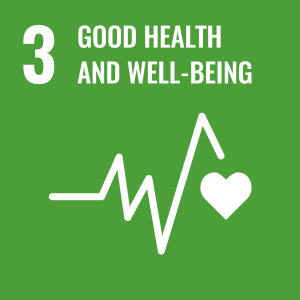
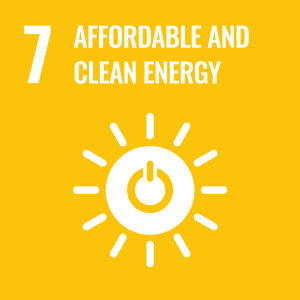
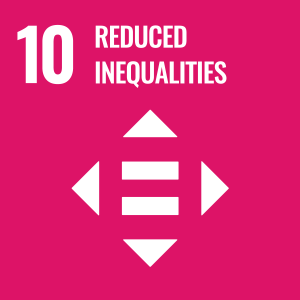
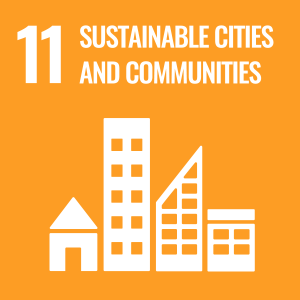
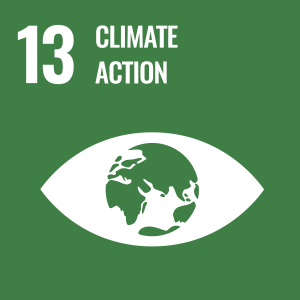
Publications
Understanding airborne pathogen transmission in cruise ship environments remains a critical challenge due to the confined nature of indoor spaces, high occupancy, and limited access for real-world experimentation. This study addresses the gap in empirical data on particulate matter and CO₂ dynamics aboard operational cruise ships, providing a high-resolution dataset that can be used for the validation of Computational Fluid Dynamics (CFD) models and informing infection probability risk assessments. An experimental trial was designed for two mechanically ventilated cruise ship rooms (R01, R02), instrumented at ten locations under eight ventilation scenarios: R01 with 100 % (S1a) and 50 % (S1b) design flow rates; R02 with 100 % (S2a), 50 % (S2b) and 10 % (S2c) design flow rates; R01 with high aerosol rate and 50 % flow rate (S3); and R01 with an air purifier at maximum (S4a, 1300 m3 h−1) and minimum (S4b, 422 m3 h−1) clean air delivery rate (CADR). A live UK-EU cruise hosted the experimental trial. Particulate matter and CO₂ concentration, temperature and relative humidity were collected using portable sensors to build a unique dataset to validate subsequent computational modelling of aerosol dispersion, infection probability and transmission prevention, mitigation and management (PMM) approaches in arbitrary passenger ship spaces. As expected, PM and CO₂ were markedly reduced under 100 % design flow ventilation compared with 50 %. Maximum PM2.5 reductions were 84 % during background, 29 % in build-up, and 72 % in decay experimental phases. An air purifier further reduced particulate matter, with peak PM reductions of 57 % (PM10), 48 % (PM2.5), and 45 % (PM1). These findings offer practical guidance for optimising air quality management strategies in cruise ships and other high-occupancy spaces, besides providing a crucial high-resolution dataset for validating numerical modelling. Moreover, this study provides valuable insights into mechanically ventilated shipboard airflow behaviour.
In naturally ventilated classrooms, the air quality and ventilation conditions rely heavily upon window and door opening behaviour of the class teacher. This study aimed to examine the impact of an Internet of Things (IoT)-based CO₂ self-surveillance display system (SAVE unit) on classroom air quality and thermal comfort. The visual-acoustic signalling of classroom ventilation conditions notified the class teacher for opening/closing of classroom doors and windows. The air quality data were collected across baseline (no alarm), S1 (visual alarm) and S2 (visual-acoustic alarm) scenarios. The alarm was triggered to notify a class teacher when CO₂ exceeded 1000 and 1500 ppm with different alarm schemes. Results showed a 19.5 % reduction in CO₂ with visual alarms and 19 % with visual-acoustic alarms. However, PM concentrations (PM₁₀, PM₂.₅, PM₁, PM₀.₁) increased due to window openings, though a daily average of PM₁₀ and PM₂.₅ remained within WHO safe limits. Teacher's decision to open or close windows was primarily influenced by classroom temperature. Higher CO2 concentration was observed during colder days (S2) due to windows kept closed to avoid uncomfortable classroom temperature and excessive use of heaters. The SAVE unit helped to effectively lowered CO₂, but it also led to higher energy consumption due to heat loss from open windows. While natural ventilation improved air quality, it highlighted the need for balancing energy efficiency and thermal comfort A holistic signalling system that integrates temperature, air quality, and ventilation parameters would better guide teachers in managing classroom ventilation. Additionally, a school-level ventilation protocol based on IoT-based signalling is recommended to ensure consistent and effective air quality management. This study underscores the importance of real-time data-driven ventilation strategies to optimise indoor air quality, reduce exposure to pollutants, and maintain a comfortable learning environment in classrooms. [Display omitted] •Ventilation behaviour induced by the visual alarm reduced classroom CO₂ by 19.5 %.•Ventilation behaviour induced by the visual-acoustic alarm reduced classroom CO₂ by 19 %.•Classroom PM increased due to window opening but remained under WHO limits.•Visual alarm is preferred in classrooms as it causes less distraction than visual-acoustic alarm.•Higher energy use could hinder large-scale adoption of such systems in natural-ventilated schools.
The COVID-19 pandemic demonstrated a profound inability of pre-pandemic passenger ship policies implemented by both ship operators and governmental authorities to detect and address newly emerging diseases. The essentiality of maritime transport puts into focus the risk of approach to address known and new emerging airborne infectious diseases that, due to increasing capacity, are likely to occur on passenger ships. In order to enhance the passenger experience, prepare shipping for pandemics like COVID-19, and improve the resilience and safety of the industry, this review critically synthesises existing literature on (1) monitoring ventilation conditions and aerosol dispersion, linking them to airborne transmission risk using airborne aerosols and ventilation performance as input parameters for computational fluid dynamics (CFD) simulations, and (2) modelling airborne disease transmission risk in controlled passenger ship environments. This review analysed 39 studies on aerosol monitoring, thermal comfort, and infection risk modelling on passenger ships (2000–2023). Additionally, 55 papers on CFD modelling of airborne pathogen dispersion were reviewed: 22 included validation, with most focused on built environments and only four specifically addressing ship environments. Two major challenges relate to the complexity and poorly characterised ventilation boundary conditions on passenger ships, and the other is the lack of suitable validation data. For this reason, ship experimental studies are required for CFD model validation. Only a handful of studies were found that have measured aerosol concentrations on board passenger ships. To the best of our knowledge, there have been no studies conducted on aerosol mass or airborne transmission sampling on board passenger ships or other types of vessels. The results of this review have the potential to create synergistic connections between experimental and modelling studies to inform, characterise and improve the development of numerical models that can accurately estimate infection risk on ships for prevention, mitigation and management of outbreaks.
Poor ventilation and polluting cooking fuels in low-income homes cause high exposure, yet relevant global studies are limited. We assessed exposure to in-kitchen particulate matter (PM2.5 and PM10) employing similar instrumentation in 60 low-income homes across 12 cities: Dhaka (Bangladesh); Chennai (India); Nanjing (China); Medellin (Colombia); Sao Paulo (Brazil); Cairo (Egypt); Sulaymaniyah (Iraq); Addis Ababa (Ethiopia); Akure (Nigeria); Blantyre (Malawi); Dar-es-Salaam (Tanzania) and Nairobi (Kenya). Exposure profiles of kitchen occupants showed that fuel, kitchen volume, cooking type and ventilation were the most prominent factors affecting in-kitchen exposure. Different cuisines resulted in varying cooking durations and disproportional exposures. Occupants in Dhaka, Nanjing, Dar-es-Salaam and Nairobi spent > 40% of their cooking time frying (the highest particle emitting cooking activity) compared with similar to 68% of time spent boiling/stewing in Cairo, Sulaymaniyah and Akure. The highest average PM2.5 (PM10) concentrations were in Dhaka 185 +/- 48 (220 +/- 58) mu g m(-3) owing to small kitchen volume, extensive frying and prolonged cooking compared with the lowest in Medellin 10 +/- 3 (14 +/- 2) mu g m(-3). Dual ventilation (mechanical and natural) in Chennai, Cairo and Sulaymaniyah reduced average in-kitchen PM2.5 and PM10 by 2.3- and 1.8-times compared with natural ventilation (open doors) in Addis Ababa, Dar-es-Salam and Nairobi. Using charcoal during cooking (Addis Ababa, Blantyre and Nairobi) increased PM2.5 levels by 1.3- and 3.1-times compared with using natural gas (Nanjing, Medellin and Cairo) and LPG (Chennai, Sao Paulo and Sulaymaniyah), respectively. Smaller-volume kitchens (
Large passenger ships are characterised as enclosed and crowded indoor spaces with frequent interactions between travellers, providing conditions that facilitate disease transmission. This study aims to provide an indoor ship CO2 dataset for inferring thermal comfort, ventilation and infectious disease transmission risk evaluation. Indoor air quality (IAQ) monitoring was conducted in nine environments (three cabins, buffet, gym, bar, restaurant, pub and theatre), on board a cruise ship voyaging across the UK and EU, with the study conducted in the framework of the EU HEALTHY SAILING project. CO2 concentrations, temperature and relative humidity (RH) were simultaneously monitored to investigate thermal characteristics and effectiveness of ventilation performance. Results show a slightly higher RH of 68.2 ± 5.3 % aboard compared to ASHRAE and ISO recommended targets, with temperature recorded at 22.3 ± 1.4 °C. Generally, good IAQ (20 L s−1 person−1) were highly over-ventilated. Dining areas including the pub and restaurant recorded high CO2 concentrations (>2000 ppm) potentially due to higher footfall (0.6 person/m−2 and 0.4 person/m−2) and limited ACH (2.3 h−1 and 0.8 h−1), indicating a potential risk of infection; these areas should be prioritised for improvement. The IAQ and probability of infection indicate there is an opportunity for energy saving by lowering hotel load for the theatre and cabins and achieving the minimum acceptable VR (10 L s−1 person−1) for occupants' comfort and disease control. Our study produced a first-time dataset from a sailing cruise ship's ventilated areas and provided evidence that can inform guidelines about the optimisation of ventilation operations in large passenger ships, contributing to respiratory health, infection control and energy efficiency aboard.
A guide for home occupants, owners, builders and local councils to reduce exposure to cooking emissions in low-middle income homes.
Cities are constantly evolving and so are the living conditions within and between them. Rapid urbanization and the ever-growing need for housing have turned large areas of many cities into concrete landscapes that lack greenery. Green infrastructure can support human health, provide socio-economic and environmental benefits, and bring color to an otherwise grey urban landscape. Sometimes, benefits come with downsides in relation to its impact on air quality and human health, requiring suitable data and guidelines to implement effective greening strategies. Air pollution and human health, as well as green infrastructure and human health, are often studied together. Linking green infrastructure with air quality and human health together is a unique aspect of this article. A holistic understanding of these links is key to enabling policymakers and urban planners to make informed decisions. By critically evaluating the link between green infrastructure and human health via air pollution mitigation, we also discuss if our existing understanding of such interventions is enabling their uptake in practice. Both the natural science and epidemiology approach the topic of green infrastructure and human health very differently. The pathways linking health benefits to pollution reduction by urban vegetation remain unclear and that the mode of green infrastructure deployment is critical to avoid unintended consequences. Strategic deployment of green infrastructure may reduce downwind pollution exposure. However, the development of bespoke design guidelines is vital to promote and optimize greening benefits and measuring green infrastructure’s socio-economic and health benefits are key for their uptake. Greening cities to mitigate pollution effects is on the rise and these needs to be matched by scientific evidence and appropriate guidelines. We conclude that urban vegetation can facilitate broad health benefits, but there is little empirical evidence linking these benefits to air pollution reduction by urban vegetation, and appreciable efforts are needed to establish the underlying policies, design and engineering guidelines governing its deployment.
Poor environmental quality in school classrooms can have a detrimental impact on children’s health, nevertheless, the association between air pollutants and physical features of classrooms is poorly understood. We monitored particulate matter (PM), carbon dioxide (CO2) and thermal comfort in sixty classrooms across ten London primary schools using similar equipment to produce a comparable dataset. The overall research objective was to understand the association of classroom air quality with occupancy levels, floor types, classroom locations, classroom volume, ventilation types and different year groups. Average in-classroom PM10 (29±20), PM2.5 (10±2) and PM1 (5±2 μg m-3) during occupied hours were ∼150% (PM10) and 110% (PM2.5) higher compared to non-occupied hours. PM10 concentration was reduced by 30% for dual (mechanical+natural) compared to natural ventilation only; the corresponding reduction was slightly lower for PM2.5 (28%) and PM1 (20%). PM10 almost doubled for wooden floored classrooms compared with those having carpets. During high occupancy (>26 occupants), the average CO2 (935±453 ppm) was ∼140% higher than non-occupancy. The average CO2 in classrooms occupied by younger children (reception and year one) was ∼190% higher than those with older children (years eight and nine). 68% of classrooms exceeded the recommended levels of 40% relative humidity. Low PM10 concentrations coincided with low CO2 concentrations in classrooms across all schools. These findings highlight the importance of simultaneously addressing both thermal comfort and the resuspension of PM10 to achieve comprehensive improvements in classroom air quality. Classroom settings where indoor environment is likely to be compromised can also be identified and addressed.
The COVID-19 pandemic elicited a global response to limit associated mortality, with social distancing and lockdowns being imposed. In India, human activities were restricted from late March 2020. This ‘anthropogenic emissions switch-off’ presented an opportunity to investigate impacts of COVID-19 mitigation measures on ambient air quality in five Indian cities (Chennai, Delhi, Hyderabad, Kolkata, and Mumbai), using in-situ measurements from 2015 to 2020. For each year, we isolated, analysed and compared fine particulate matter (PM2.5) concentration data from 25 March to 11 May, to elucidate the effects of the lockdown. Like other global cities, we observed substantial reductions in PM2.5 concentrations, from 19 to 43% (Chennai), 41–53 % (Delhi), 26–54 % (Hyderabad), 24–36 % (Kolkata), and 10–39 % (Mumbai). Generally, cities with larger traffic volumes showed greater reductions. Aerosol loading decreased by 29 % (Chennai), 11 % (Delhi), 4% (Kolkata), and 1% (Mumbai) against 2019 data. Health and related economic impact assessments indicated 630 prevented premature deaths during lockdown across all five cities, valued at 0.69 billion USD. Improvements in air quality may be considered a temporary lockdown benefit as revitalising the economy could reverse this trend. Regulatory bodies must closely monitor air quality levels, which currently offer a baseline for future mitigation plans.
Cars are a commuting lifeline worldwide, despite contributing significantly to air pollution. This is the first global assessment on air pollution exposure in cars across ten cities: Dhaka (Bangladesh); Chennai (India); Guangzhou (China); Medellín (Colombia); São Paulo (Brazil); Cairo (Egypt); Sulaymaniyah (Iraq); Addis Ababa (Ethiopia); Blantyre (Malawi); and Dar-es-Salaam (Tanzania). Portable laser particle counters were used to develop a proxy of car-user exposure profiles and analyse the factors affecting particulate matter ≤2.5 μm (PM2.5; fine fraction) and ≤10 μm (PM2.5–10; coarse fraction). Measurements were carried out during morning, off- and evening-peak hours under windows-open and windows-closed (fan-on and recirculation) conditions on predefined routes. For all cities, PM2.5 and PM10 concentrations were highest during windows-open, followed by fan-on and recirculation. Compared with recirculation, PM2.5 and PM10 were higher by up to 589% (Blantyre) and 1020% (São Paulo), during windows-open and higher by up to 385% (São Paulo) and 390% (São Paulo) during fan-on, respectively. Coarse particles dominated the PM fraction during windows-open while fine particles dominated during fan-on and recirculation, indicating filter effectiveness in removing coarse particles and a need for filters that limit the ingress of fine particles. Spatial variation analysis during windows-open showed that pollution hotspots make up to a third of the total route-length. PM2.5 exposure for windows-open during off-peak hours was 91% and 40% less than morning and evening peak hours, respectively. Across cities, determinants of relatively high personal exposure doses included lower car speeds, temporally longer journeys, and higher in-car concentrations. It was also concluded that car-users in the least affluent cities experienced disproportionately higher in-car PM2.5 exposures. Cities were classified into three groups according to low, intermediate and high levels of PM exposure to car commuters, allowing to draw similarities and highlight best practices.
The health and academic performance of children are significantly impacted by air quality in classrooms. However, there is a lack of understanding of the relationship between classroom air pollutants and contextual factors such as physical characteristics of the classroom, ventilation and occupancy. We monitored concentrations of particulate matter (PM), CO2 and thermal comfort (relative humidity and temperature) across five schools in London. Results were compared between occupied and unoccupied hours to assess the impact of occupants and their activities, different floor coverings and the locations of the classrooms. In-classroom CO2 concentrations varied between 500 and 1500 ppm during occupancy; average CO2 (955 ± 365 ppm) during occupancy was ∼150% higher than non-occupancy. Average PM10 (23 ± 15 μgm-3), PM2.5 (10 ± 4 μgm-3) and PM1 (6 ± 3 μg m-3) during the occupancy were 230, 125 and 120% higher than non-occupancy. Average RH (29 ± 6%) was below the 40–60% comfort range in all classrooms. Average temperature (24 ± 2 °C) was >23 °C in 60% of classrooms. Reduction in PM10 concentration (50%) by dual ventilation (mechanical + natural) was higher than for PM2.5 (40%) and PM1 (33%) compared with natural ventilation (door + window). PM10 was higher in classrooms with wooden (33 ± 19 μg m-3) and vinyl (25 ± 20 μgm-3) floors compared with carpet (17 ± 12 μgm-3). Air change rate (ACH) and CO2 did not vary appreciably between the different floor levels and types. PM2.5/PM10 was influenced by different occupancy periods; highest value (∼0.87) was during non-occupancy compared with occupancy (∼0.56). Classrooms located on the ground floor had PM2.5/PM10 > 0.5, indicating an outdoor PM2.5 ingress compared with those located on the first and third floors (300 m3) classroom showed ∼33% lower ACH compared with small-volume (100–200 m3). These findings provide guidance for taking appropriate measures to improve classroom air quality.
Experiments were conducted in an UK inter-city train carriage with the aim of evaluating the risk of infection to the SARS-CoV-2 virus via airborne transmission. The experiments included in-service CO2 measurements and the measurement of salt aerosol concentrations released within the carriage. Computational fluid dynamics simulations of the carriage airflow were also used to visualise the airflow patterns, and the efficacy of the HVAC filter material was tested in a laboratory. Assuming an infectious person is present, the risk of infection for a 1-h train journey was estimated to be 6 times lower than for a full day in a well-ventilated office, or 10–12 times lower than a full day in a poorly ventilated office. While the absolute risk for a typical journey is likely low, in the case where a particularly infectious individual is on-board, there is the potential for a number of secondary infections to occur during a 1-h journey. Every effort should therefore be made to minimize the risk of airborne infection within these carriages. Recommendations are also given for the use of CO2 sensors for the evaluation of the risk of airborne transmission on train carriages.
Background Children spend significant amounts of time at school, making the school environment a potentially important contributor to air quality exposure. Aim The SAMHE initiative has a dual aim: 1) to develop and test a bespoke citizen science framework for collecting environment and indoor air quality data in classrooms, alongside contextual data capable of enriching analysis, at an unprecedented scale; and, 2) to simultaneously use these methods to raise awareness among communities regarding their exposure to air pollution in the school environment. Methodology To achieve this dual aim, the SAMHE project was initiated to deploy more than 2 000 low-cost indoor air quality monitors in school classrooms. A Web App has been co-designed with schools to support collecting a large comprehensive dataset (including school buildings’ characteristics, operation and behavioural patterns) and to enable students and teachers to interact with the data gathered in their school. Results and outlook We present the design of the interface and visuals that have been co-designed with 20+ schools and tested with 120+ schools. Within one week of the SAMHE launch week, 537 schools had registered to join the project, and at the time of writing (just seven weeks later) this number had grown to around 800 schools. This highlights the potential for this novel initiative to provide a step-change in the way that indoor air quality datasets are gathered at a national and, potentially, international level while simultaneously enabling schools to better manage their indoor environment and empowering students and teachers to reduce their environmental health risks.
A key challenge in controlling Delhi’s air quality is a lack of clear understanding of the impacts of emissions from the surrounding National Capital Region (NCR). Our objectives are to understand the limitations of publicly available data, its utility to determine pollution sources across Delhi-NCR and establish seasonal profiles of chemically active trace gases. We obtained the spatiotemporal characteristics of daily-averaged particulate matter (PM10 and PM2.5) and trace gases (NOX,O3,SO2, and CO) within a network of 12 air quality monitoring stations located over 2000 km2 across Delhi-NCR from January 2014 to December 2017. The highest concentrations of pollutants, except O3, were found at Anand Vihar compared with lowest at Panchkula. A high homogeneity in PM2.5 was observed among Delhi sites as opposed to a high spatial divergence between Delhi and NCR sites. The bivariate polar plots and k-means clustering showed that PM2.5 and PM10 concentrations are dominated by local sources for all monitoring sites across Delhi-NCR. A consequence of the dominance of local source contributions to measured concentrations, except to one site remote from Delhi, is that it is not possible to evaluate the influence of regional pollution transport upon PM concentrations measured at sites within Delhi and the NCR from concentration measurements alone.
Particulate black carbon has a range of negative impacts on health, the environment and climate, however despite this there are relatively few long-term studies on its ambient distribution as a tropospheric air pollutant. In order to address this lack of data, to help to provide greater insight into the spatio-temporal distribution of particulate black carbon and to assess potential influencing factors, a new, permanent suburban monitoring network was established with sites in four northwest European cities: London (UK), Leicester (UK), Amsterdam (the Netherlands) and Antwerp (Belgium). We report here an analysis of the first measurements made by the network over a twenty-seven-month period (January 01, 2013–April 01, 2015), alongside data from pre-existing comparator urban roadside (AURN Marylebone Road, London, UK) and rural background (AURN Auchencorth Moss, Scotland) sites. The temporal evolution of black carbon was investigated at each site, as were associations with other commonly monitored pollutants (e.g. O3, NOx, PM2.5, PM10) and wind fields. Results showed clear anthropogenic signatures across the diurnal, weekly and annual timeframes, and positive correlations were obtained between black carbon measurements and other common traffic-related pollutants, highlighting the importance of vehicle emissions as a major contributor to ambient black carbon concentration in northwest Europe. Average black carbon concentrations varied from 6.6 μg m−3 at the urban roadside, to 0.2 μg m−3 in the rural background, with suburban and urban background sites having average concentrations in the range of 1.0–2.4 μg m−3. Wind field analysis further highlighted the importance of road traffic as a source of black carbon and demonstrated the importance of local emission sources at the various receptor locations. Statistical analysis of data between sites generally indicated a weak correlation (rs = −0.03 to 0.68, COD = 0.32–0.91), further highlighting the importance of local emissions in determining ambient black carbon concentration. It was also found that black carbon comprised a significant portion of total ambient particulate matter (PM), particularly at sites with the larger traffic volumes and during rush-hour (e.g. ~45% of PM2.5 at Marylebone Road), however, its contribution to total PM was found to decrease on days of high pollution, indicating the importance of other PM components when air quality is particularly poor. [Display omitted] •BC and traffic pollutants are highly correlated, indicating road traffic is a significant BC source in sub/urban NW-Europe.•Cross-site study shows BC is mainly a local pollutant and significant contributor towards suburban PM, particularly PM2.5.•Proximity of local sources is a crucial influencing factor on ambient BC concentrations.•BC contributions to PM are particularly high during periods of increased anthropogenic activity and during winter months.
In-kitchen air pollution is a leading environmental issue, attributable to extensive cooking, poor ventilation and the use of polluting fuels. We carried out a week-long monitoring of CO2, temperature and relative humidity (RH) in five low-income residential kitchens of 12 global cities (Dhaka, Chennai, Nanjing, Medellín, São Paulo, Cairo, Sulaymaniyah, Addis Ababa, Nairobi, Blantyre, Akure and Dar-es-Salaam). During cooking, the average in-kitchen CO2 concentrations were 22.2% higher than the daily indoor average. Also, the highest CO2 was observed for NVd (natural ventilation-door only; 711 ± 302 ppm), followed by NVdw (natural ventilation-door + window; 690 ± 319 ppm) and DVmn (dual ventilation-mechanical + natural; 677 ± 219 ppm). Using LPG and electric appliances during cooking exhibited 32.2% less CO2 than kerosene. Larger kitchens (46–120 m3) evinced 28% and 20% less CO2 than medium (16–45 m3) and small (4–15 m3) ones, respectively. In-kitchen CO2 with >2 occupants during cooking was 7% higher than that with one occupant. 87% of total kitchens exceeded the ASHRAE standard (RH >40%, temperature >23 °C) for thermal comfort. Considering the ventilation type, both the ACH (air change rate per hour) and ventilation rate followed the order: NVdw > NVd > DVmn, while the trend for weekly average CO2 concentration was NVd > DVmn > NVdw. Larger kitchens presented 22% and 28% less ACH, and 82% and 190% higher ventilation rate than medium- and small-volume ones, respectively. Forty-three percent kitchens had ACH
In this study, the long-term spatio-temporal variation, trends, and source increments of particulate matter (PM10 and PM2.5) and gaseous pollutants (SO2, NO, NO2, CO, O3) measured from 2015 to 2021 across 37 air quality monitoring stations in the European and Asian sides of Istanbul were investigated. The average PM10 concentration on the European side is higher than the Asian side. However, the average PM2.5 in both regions showed the same values. The results show that the industries near urban sites mainly affect PM10 concentrations in Istanbul. Ship emissions (from the Istanbul Strait) make the largest incremental contribution to SO2 and CO (211% and 139%, respectively) among other pollutants. PM10, PM2.5, SO2, and NO2 concentrations show significant (p
Increasing emissions from sources such as construction and burning of biomass from crop residues, roadside and municipal solid waste have led to a rapid increase in the atmospheric concentrations of fine particulate matter (≤2.5 μm; PM2.5) over many Indian cities. Analyses of their chemical profiles are important for receptor models to accurately estimate the contributions from different sources. We have developed chemical source profiles for five important pollutant sources - construction (CON), paved road dust (PRD), roadside biomass burning (RBB), solid waste burning (SWB), and crop residue burning (CPB) - during three intensive campaigns (winter, summer and post-monsoon) in and around Delhi. We obtained chemical characterisations of source profiles incorporating carbonaceous material such as organic carbon (OC) and elemental carbon (EC), water-soluble ions (F−, Cl−, NO2−, NO3−, SO42−, PO43−, Na+ and NH4+), and elements (Mg, Al, Si, P, S, Cl, K, Ca, Ti, V, Cr, Mn, Fe, Co, Ni, Cu, Zn, As, Br, Rb, Sr, Ba, and Pb). CON was dominated by the most abundant elements, K, Si, Fe, Al, and Ca. PRD was also dominated by crustal elements, accounting for 91% of the total analysed elements. RBB, SWB and CPB profiles were dominated by organic matter, which accounted for 94%, 86.2% and 86% of the total PM2.5, respectively. The database of PM emission profiles developed from the sources investigated can be used to assist source apportionment studies for accurate quantification of the causes of air pollution and hence assist governmental bodies in formulating relevant countermeasures. [Display omitted]
A series of experiments was undertaken on an intercity train carriage aimed at providing a “proof of concept” for three methods in improving our understanding of airflow behaviour and the accompanied dispersion of exhaled droplets. The methods used included the following: measuring CO2 concentrations as a proxy for exhaled breath, measuring the concentrations of different size fractions of aerosol particles released from a nebuliser, and visualising the flow patterns at cross-sections of the carriage by using a fog machine and lasers. Each experiment succeeded in providing practical insights into the risk of airborne transmission. For example, it was shown that the carriage is not well mixed over its length, however, it is likely to be well mixed along its height and width. A discussion of the suitability of the fresh air supply rates on UK train carriages is also provided, drawing on the CO2 concentrations measured during these experiments,
Carbonaceous material is an important component of atmospheric aerosol particles, which plays a significant role in air quality and climate, and also has potentially negative impacts on human health. There is a lack of data reported in the literature regarding the carbonaceous fraction of aerosol in the North-West European ‘air pollution hotspot’ and this work reports a comprehensive one-year intensive measurement campaign, where organic carbon (OC) and elemental carbon (EC) fractions of PM10 (particulate matter of diameter ≤ 10 μm) were measured. Owing to the importance of carbonaceous aerosols in understanding particulate pollution sources, ~2000 PM10 samples were simultaneously collected across North-West Europe at four urban background sites located in Amsterdam (AD), Antwerp (AP), Leicester (LE) and Lille (LL), and one industrial site at Wijk aan Zee (WZ). PM10 samples were chemically analysed by OC-EC analyser for carbonaceous species (OC, and EC) and trends were identified. OC accounted for 12.8%, 13.9%, 15.3%, 15.1% and 9.8%, and EC accounted for 2.4%, 4.9%, 4.4%, 4.0%, and 2.4% of total PM10 mass for AD, AP, LE, LL and WZ, respectively. Secondary organic carbon (SOC) contributions were higher in warmer months compared to colder months, and SOC concentration levels were similar at all five locations, with SOC contributing more than primary organic aerosol (POC) in each city. The lower effective carbon ratio (ECR) values (≤0.3) at all five sites in October, November, and February can be attributed to higher combined POC and EC concentrations and lesser contributions from SOC, meaning that SOC with a greater relative formation has a greater tendency to disperse solar radiation. Higher ECR values in April, May, and July, on the other hand, indicate that more absorbing types of carbonaceous aerosols are also present. More than 90% of the air-mass trajectories were from the north and northeast. This paper details atmospheric processes and sources influencing the seasonal variability of the carbonaceous components of PM10. [Display omitted] •Carbonaceous aerosols concentrations have been measured in five cities across North-West Europe.•Clear seasonal variation of OC/EC was observed with higher levels in winter/spring.•Secondary organic aerosols (SOA) were the highest in spring at the five sites.•SOA production is more affected by photochemistry than weather conditions.
Car microenvironments significantly contribute to the daily pollution exposure of commuters, yet health and socioeconomic studies focused on in-car exposure are rare. This study aims to assess the relationship between air pollution levels and socioeconomic indicators (fuel prices, city-specific GDP, road density, the value of statistical life (VSL), health burden and economic losses resulting from exposure to fine particulate matter ≤2.5µm; PM2.5) during car journeys in ten cities: Dhaka (Bangladesh); Chennai (India); Guangzhou (China); Medellín (Colombia); São Paulo (Brazil); Cairo (Egypt); Sulaymaniyah (Iraq); Addis Ababa (Ethiopia); Blantyre (Malawi); and Dar-es-Salaam (Tanzania). Data collected by portable laser particle counters were used to develop a proxy of car-user exposure profiles. Hotspots on all city routes displayed higher PM2.5 concentrations and disproportionately high inhaled doses. For instance, the time spent at the hotspots in Guangzhou and Addis Ababa was 26% and 28% of total trip time, but corresponded to 54% and 56%, respectively, of the total PM2.5 inhaled dose. With the exception of Guangzhou, all the cities showed a decrease in per cent length of hotspots with an increase in GDP and VSL. Exposure levels were independent of fuel prices in most cities. The largest health burden related to in-car PM2.5 exposure was estimated for Dar-es-Salam (81.6±39.3 μg m-3), Blantyre (82.9±44.0) and Dhaka (62.3±32.0) with deaths per 100,000 of the car commuting population per year of 2.46 (2.28-2.63), 1.11 (0.97-1.26) and 1.10 (1.05-1.15), respectively. However, the modest health burden of 0.07 (0.06-0.08), 0.10 (0.09-0.12) and 0.02 (0.02-0.03) deaths per 100,000 of the car commuting population per year were estimated for Medellin (23±13.7 μg m-3), São Paulo (25.6±11.7) and Sulaymaniyah (22.4±15.0), respectively. Lower GDP was found to be associated with higher economic losses due to health burdens caused by air pollution in most cities, indicating a socioeconomic discrepancy. This assessment of health and socioeconomic parameters associated with in-car PM2.5 exposure highlights the importance of implementing plausible solutions to make a positive impact on peoples’ lives in these cities.
